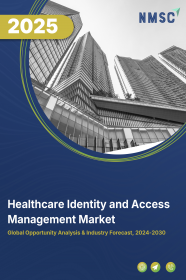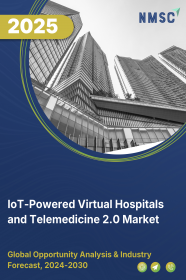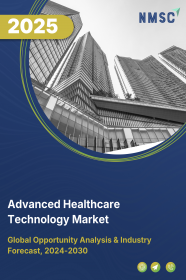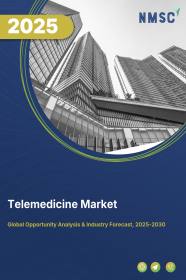
Healthcare Identity and Access Management Market by Offerings (Solutions and Services), by Authentication Method (Single-Factor Authentication, Multi-Factor Authentication, Biometric Authentication, and Smart Cards), by Applications (Patient Identity Management, Workforce Identity Management, Medical Device Access Management, and Emergency Access Management), by Deployment Mode (On-Premises and Cloud-Based) and Others – Global Opportunity Analysis and Industry Forecast – 2024 – 2030
US Tariff Impact on Healthcare Identity and Access Management Market
Trump Tariffs Are Reshaping Global Business
Healthcare Identity and Access Management Market Overview
The global Healthcare Identity and Access Management Market size is valued at USD 3.94 billion in 2023 and is predicted to reach USD 7.51 billion by 2030 with a CAGR of 9.65% from 2024-2030.
Healthcare identity and access management (IAM) market refers to the industry focused on delivering solutions and services that ensure secure, compliant access to healthcare systems while safeguarding sensitive patient data. IAM enables healthcare providers such as hospitals and pharmaceutical companies to efficiently manage user identities and control access to critical applications and data. Some of the features of IAM include multi-factor authentication, single sign-on (SSO), and role-based access controls that ensures only authorized personnel to access specific resources.
The implementation of IAM supports regulatory compliance, enhances operational efficiency, and strengthens data security, mitigating risks associated with breaches and fraud. IAM solutions also promote accountability and transparency across healthcare networks by optimizing patient identity management and streamlining secure data exchange between organizations. The rising adoption of telemedicine, digital health records, and increasing stringent regulatory requirements facilitate the demand for advanced and scalable IAM solutions. These solutions are critical for protecting healthcare data, thereby driving market expansion and fostering trust in digital healthcare ecosystems.
Market Dynamics and Trends
Rising aging population globally increases the demand for healthcare IAM as more elderly individuals require chronic disease management and long-term care. This surge in need for frequent medical attention and complex treatments for elderly patients prompts healthcare providers to seek IAM solutions that enhance access to sensitive information while ensuring data security.
According to World Population Prospects 2022, the percentage of global population aged 65 accounted to 10% in 2022 and is expected to rise 16% in 2050. This surge in aging population number subsequently increases demand for IAM in healthcare that ensures only healthcare professionals to access patient records to protect the sensitive information.
Moreover, the increasing healthcare services due to government investment drives demand for healthcare IAM as these services attract a larger patient population, necessitating efficient systems to manage patient identities and access to sensitive data.
In 2024, World Bank Group aimed to expand health services to 1.5 billion people by 2030. Subsequently, the expansion of healthcare IT services fuels the growth of the IAM market by increasing the need for secure, compliant, and efficient management of sensitive patient data and access controls.
Also, growing advancements in remote patient monitoring technology drives the need for continuous health management from home that significantly boost healthcare data security growth. This necessitates implementation of robust IAM systems to safeguard sensitive data transmitted by monitoring devices.
For instance, in May 2024, LG Electronics launched Primefocus Health to enhance home healthcare delivery by utilizing advanced technology for remote patient monitoring and data management that manages access to sensitive patient information.
This rise in remote patient monitoring highlights the critical need for advanced IAM systems to protect sensitive health data. However, the high cost associated with deployment and maintenance of effective IAM systems for small and medium-sized enterprises hinders the healthcare identity and access management market growth.
On the contrary, integration of artificial intelligence (AI) in healthcare identity and access management creates ample growth opportunity for the market. AI enhance IAM by detecting anomalies in access patterns, automating threat responses, and optimizing encryption, ensuring that sensitive patient data remains protected. For instance, in Aug 2024, Innovaccer launched the Government Health AI Data and Analytics Platform to manage patient data securely and efficiently involving IAM practices. Thus, the integration of AI will accelerate healthcare identity and access management market expansion by delivering enhanced security through personalized verification and efficient automation of processes.
Market Segmentations and Scope of the Study
The healthcare identity and access management market report is segmented on the basis of offerings, components, deployment mode, enterprise size, end-users and region. On the basis of offerings, the market is divided into solutions and services. Solutions is further segmented into enhance patient data security, secure remote access, improve compliance, enable single sign-on (SSO) for healthcare, empower self-service capabilities, and others. On the basis of authentication method, the market is classified into single-factor authentication, multi-factor authentication, biometric authentication, and smart cards.
On the basis of applications, the market is divided into patient identity management, workforce identity management, medical device access management, and emergency access management.On the basis of deployment mode, the market is segmented into on-premises and cloud-based. On the basis of enterprise size, the market is divided into small and medium size enterprises and large enterprises. On the basis of end-user, the market is divided into hospital and clinics, pharmaceutical companies, laboratories and diagnostic centers, and others. Regional breakdown and analysis of each of the aforesaid segments includes regions comprising of North America, Europe, Asia-Pacific, and RoW.
Geographical Analysis
North-America dominates the healthcare identity and access management market share and is expected to continue its dominance during the forecast period. This is attributed to the growing use of telemedicine that drives the demand for robust IAM systems to securely manage sensitive patient data on digital platforms.
According to a 2022 report by the Centers for Disease Control and Prevention (CDC), 37% of U.S. adults utilized telemedicine in 2021, with women at 42% compared to 31.7% of men. This growing reliance on telemedicine emphasizes the need for advanced IAM solutions to protect patient data and ensure the secure delivery of remote healthcare services.
Moreover, increasing incidence of cybercrime in healthcare sector significantly drives the demand for advanced IAM solutions. According to the FBI’s 2023 Internet Crime Report, complaints of cybercrime reached 880,418, a 10% increase from 2022, with total losses rising to USD12.5 billion from USD10.3 billion. This surge in cybercrime drives demand for advanced IAM solutions that boost the market as organizations seek robust systems to enhance data security and ensure regulatory compliance.
On the other hand, Asia-Pacific is the fastest growing region in healthcare identity and access management industry driven by rising healthcare expenditures that boost funding for advanced IAM solutions to safeguard patient data from breaches.
According to World Bank data, healthcare expenditure in the Republic of Korea represented 9.72% of GDP, reflecting a 4% increase from 2021. This rise in healthcare spending enables hospitals and clinics to implement more sophisticated identity verification methods that fuels the growth of the market in this region.
Also, the increasing aging population in this region, driven by rising life expectancy, fuels the need for advanced healthcare identity and access management systems. The need for secure and efficient healthcare services rises with the need for chronic disease management and frequent consultations among the elderly, requiring effective management of large volumes of sensitive patient data.
According to Population Reference Bureau (PRB) report, Japan holds the highest proportion of elderly individuals, accounting for 28.2% of its population. Such high count of elderly demographic consequently increases the need for IAM systems, as it ensures secure access to patient information and facilitate remote healthcare services including telemedicine.
Competitive Landscape
Various key market players operating in the healthcare identity and access management industry are SailPoint Technologies, Inc., Ping Identity, Oracle Corporation, IBM Corporation, HID Global Corporation, Okta, Imprivata, Inc., One Identity LLC, Ubisecure, Inc., LexisNexis Risk Solutions, Identity Fusion, Inc., Evidian, Cidaas, Intragen Ltd., My1Login, and others. These market players are adopting various strategies such as product launches and business expansion to maintain their dominance in the industry.
For instance, in June 2024, Oracle NetSuite launched healthcare solution to enhance efficiency and patient care. The solution includes features that support compliance with the Health Insurance Portability and Accountability Act (HIPAA) that is crucial for managing electronic protected health information. Thus, it is designed to strengthen data security and streamline processes within healthcare organizations.
Furthermore, in June 2024, SailPoint Technologies, Inc., expanded its business reach by launching data access security and non-employee risk management capabilities. Consequently, launch of such solution enhances security by managing user access and provisioning to critical applications that ensures protection of sensitive data.
Key Benefits
-
The report provides quantitative analysis and estimations of the healthcare identity and access management market from 2024 to 2030, which assists in identifying the prevailing industry opportunities.
-
The study comprises a deep-dive analysis of the current and future healthcare identity and access management market trends to depict prevalent investment pockets in the industry.
-
Information related to key drivers, restraints, and opportunities and their impact on the healthcare identity and access management industry is provided in the report.
-
Competitive analysis of the key players, along with their market share is provided in the report.
-
SWOT analysis and Porters Five Forces model is elaborated on the study.
-
Value chain analysis in the market study provides a clear picture of roles of stakeholders.
Healthcare Identity and Access Management Market Key Segments
By Offerings
-
Solutions
-
Enhance patient data security
-
Secure remote access
-
Improve compliance
-
Enable Single Sign-On (SSO) for healthcare
-
Empower self-service capabilities
-
Others
-
-
Services
By Authentication Method
-
Single-Factor Authentication
-
Multi-Factor Authentication
-
Biometric Authentication
-
Smart Cards
By Applications
-
Patient Identity Management
-
Workforce Identity Management
-
Medical Device Access Management
-
Emergency Access Management
By Deployment Mode
-
On-Premises
-
Cloud-Based
By Enterprise Size
-
Small and Medium Size Enterprises
-
Large Enterprises
By End-Users
-
Hospital and Clinics
-
Pharmaceutical Companies
-
Laboratories and Diagnostic Centers
-
Others
By Region
-
North America
-
The U.S.
-
Canada
-
Mexico
-
-
Europe
-
The UK
-
Germany
-
France
-
Italy
-
Spain
-
Denmark
-
Netherlands
-
Finland
-
Sweden
-
Norway
-
Russia
-
Rest of Europe
-
-
Asia-Pacific
-
China
-
Japan
-
India
-
South Korea
-
Australia
-
Indonesia
-
Singapore
-
Taiwan
-
Thailand
-
Rest of Asia-Pacific
-
-
RoW
-
Latin America
-
Middle East
-
Africa
-
Key Players
-
SailPoint Technologies, Inc.
-
Ping Identity
-
Oracle Corporation
-
IBM Corporation
-
HID Global Corporation
-
Okta
-
Imprivata, Inc.
-
One Identity LLC
-
Ubisecure, Inc.
-
LexisNexis Risk Solutions
-
Identity Fusion, Inc.
-
Evidian
-
Cidaas
-
Intragen Ltd.
-
My1Login
REPORT SCOPE AND SEGMENTATION:
|
Parameters |
Details |
|
Market Size in 2023 |
USD 3.94 Billion |
|
Revenue Forecast in 2030 |
USD 7.51 Billion |
|
Growth Rate |
CAGR of 9.65 % from 2024 to 2030 |
|
Analysis Period |
2023–2030 |
|
Base Year Considered |
2023 |
|
Forecast Period |
2024–2030 |
|
Market Size Estimation |
Billion (USD) |
|
Growth Factors |
|
|
Countries Covered |
28 |
|
Companies Profiled |
15 |
|
Market Share |
Available for 10 companies |
|
Customization Scope |
Free customization (equivalent up to 80 working hours of analysts) after purchase. Addition or alteration to country, regional, and segment scope. |
|
Pricing and Purchase Options |
Avail customized purchase options to meet your exact research needs. |

















 Speak to Our Analyst
Speak to Our Analyst





















